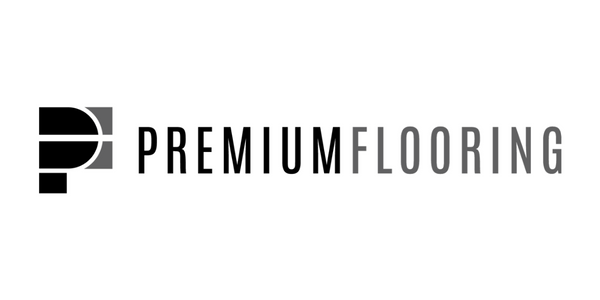A home gym is more than just assembling the physical fitness equipment; it's about designing a space that will motivate and drive the user toward achieving personal goals for physical fitness. Floor coverings contribute greatly to how a workout room works, how safe it is, and the beauty of a residence. Quality floor coverings will enhance your workout, minimise noise, and offer protection both for your equipment and the structural integrity of your house. Here's a step-by-step guide for choosing excellent floor coverings for your home gym.
Understanding Your Home Gym Needs
Before getting into the specific flooring options, let's consider your workout routines and equipment. A home gym used for weightlifting will have different needs than one used for yoga or cardio. Here are some things to consider:
Impact Resistance: Flooring should be able to absorb shock from heavy weights and high-impact movements.
Durability: Frequent use requires materials that can withstand wear and tear.
Ease of Maintenance: Sweat, dirt, and occasional spills mean your flooring should be easy to clean.
Noise Reduction: A good floor minimises the noise and vibrations caused by workouts.
Safety: Anti-slip surfaces reduce the risk of injuries.
Alternatives to Flooring for Home Exercise Rooms
Rubber Flooring
Rubber flooring is one of the best choices for home gyms because it is versatile and very durable. Available in tile, roll, and mat forms, rubber flooring offers:
Shock Absorbency: Ideal for weightlifting, rubber catches the falls of equipment so neither the equipment nor the floor is damaged.
Slip Resistance: The textured surface is safe for intense training sessions.
Easy Maintenance: Rubber is easy to clean with a damp mop, ideal for sweaty settings.
Foam Flooring
Foam flooring is light and inexpensive and is often used for yoga, pilates, or martial arts. Its advantages include:
Cushioning: Soft foam is comfortable to exercise on with bodyweight and stretching.
Portability: Foam tiles are simple to install and move around, offering the flexibility of a layout.
Affordability: It is an economical choice for low-impact workouts.
Foam is not ideal for heavy equipment but performs well in body movement and flexibility rooms.
Vinyl Flooring
Vinyl flooring provides a smooth, tough, and water-resistant flooring solution for home gyms. It is suitable for multi-purpose rooms where aesthetics count. Benefits include:
Moisture Resistance: Vinyl is resistant to sweat and spills that do not warp or stain.
Durability: It does not scratch and dent even with heavy equipment.
Stylish Appearance: In various designs, vinyl can give the appearance of wood or stone for a finished look.
Carpet Tiles
For home gyms, carpet tiles offer a comfortable and warm flooring surface. Popular for cardio and bodyweight activities, carpet tiles bring several benefits such as:
Comfort: Softness reduces the stress to joints in impact activities.
Noise Reduction: It dampens noise, hence, quieter.
Replacement Ease: Tiles can be easily replaced in case of damage.
However, carpets are less resistant to moisture and not perfect for high-intensity workouts or for areas prone to spills.
Cork Flooring
For a more environmentally friendly and comfortable alternative, cork flooring is a great choice. Its natural characteristics make it a great fit for any kind of workout:
Shock Absorption: Cork provides a soft feel and lessens the feeling of exhaustion from exercising.
Thermal Insulation: It preserves heat, ensuring that your gym remains comfortable during the colder months.
Sustainability: Crafted from renewable resources, cork serves as an environmentally sustainable option.
Guidelines for Selecting Optimal Flooring
To optimise the flooring for your home gym, consider the following guidelines:
Evaluate Your Activities: Customise your flooring selection according to your distinct exercise regimens. For instance, areas designated for weightlifting require resilient rubber, whereas zones intended for yoga are better suited with softer foam.
Think About Installation: Some materials, like foam tiles, are DIY-friendly, while others, such as rolled rubber, may require professional installation.
Plan for Maintenance: Consider how much time you’re willing to spend cleaning and maintaining your flooring.
Budget Wisely: Invest in high-quality flooring that balances cost with durability and performance.
Consider Versatility: If your gym space doubles as a living area, opt for flooring that complements your home’s decor.
Enhance Your Gym Session
The floors you opt for decide the entire feel and functionality of your home gym. Better than just aesthetic appeal and performance, the right type of flooring creates an environment that inspires you to attain your objectives.
Whether you're attracted to the durability of rubber, the comfort of foam, or the style of vinyl, each option has its unique benefits. If you're looking for a professional touch, hiring a buyer's agent to identify properties that already have a gym area or space that is perfect for setting one up will save you time and effort.
Take the time to find your options and create a home gym that supports your workouts while also improving your lifestyle. Right flooring can make any space transform into a dedicated haven for health and fitness, so every exercise session becomes more enjoyable and productive.

